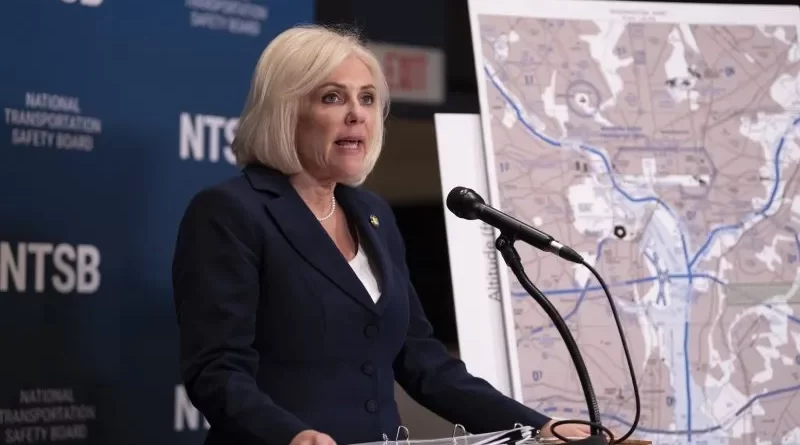Traffic accidents at Washington, DC, airport raise questions about why changes weren’t made before the crash.
When Congress last year pushed ahead with adding 10 new daily flights to Washington, D.C.’s Reagan National Airport, the Federal Aviation Administration had data showing a disturbing number of near misses in the already crowded airspace — something lawmakers apparently didn’t know.
The FAA, which manages the nation’s airspace and oversees aviation safety, had data on dozens of incidents that experts said documented a safety problem. That data led to no action before the deadly midair collision in January between an American Airlines jet and a military helicopter that killed 67 people.
“Why anyone didn’t pay attention to those numbers and those events are questions that still need to be answered,” said James Hall, a former chairman of the National Transportation Safety Board during the Clinton administration. “What you don’t want to do is ignore that many incidents.”
Data collected by the FAA shows that dangerous situations occurred far more often than travelers and outside aviation experts realized at Reagan National, which was built to handle 15 million passengers a year, not the 25 million who traveled through it annually.
Now safety experts and family members who lost loved ones in the Jan. 29 crash are questioning why action wasn’t taken sooner.
The NTSB said pilots were warned to take evasive action to avoid hitting helicopters at least once a month from 2011 to 2024, citing data collected by the FAA, and that there were 85 near misses when planes were within a few hundred feet of each other in recent years.
“How can this happen in this day and age and nobody do anything about it?” asked Doug Lane, whose wife, Christine Conrad Lane, and their 16-year-old son, Spencer, died in the crash.
Pilots have long worried about the busy and complex airspace around Reagan National, near the heart of the nation’s capital, where flights must maneuver around military aircraft and restricted areas. It was no secret that there had been near misses before, but the numbers the NTSB found were alarming.
FAA officials have not said who within the agency has seen the data or whether it has led to discussions about possible changes. Messages seeking comment were not immediately returned Thursday.
“If anyone was paying attention, if anyone was working, they would have seen this,” Duffy said. He also announced that he would continue to ban some helicopter flights around the airport, a measure that was temporarily implemented after the crash.
Safety attorney Mary Schiavo, a former inspector general for the U.S. Department of Transportation, said that while there was plenty of blame for the midair collision, the FAA was shockingly complacent.
“They’re literally waiting for a disaster to happen,” she said. “I can’t even imagine how the families of those who died in this crash are going to cope with this. I mean, that would be so maddening to hear.”
In Kansas, some officials also argue that the FAA’s records should have been easily accessible to the public. State Rep. John Carmichael, of Wichita, where the plane’s flight took off, said Thursday that it’s not enough for people to get records through Freedom of Information Act requests, since that can take months.
“The public absolutely needs to be aware of these kinds of statistics because we all put our lives in the hands of pilots and air traffic controllers every time we get on an airplane,” said Kris Kobach, the state’s attorney general. “I hope the Trump administration will make this kind of information available to the traveling public.”

